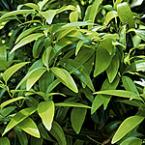Cinnamon

On this page:
Introduction
This fact sheet provides basic information about cinnamon—common names, what the science says, potential side effects and cautions, and resources for more information.
Cinnamon comes from the bark of trees native to China, India, and Southeast Asia. A popular cooking spice in many cultures for centuries, cinnamon also has a long history of use as a folk or traditional medicine. For example, many ancient societies used cinnamon for bronchitis. Additional folk or traditional uses include gastrointestinal problems, loss of appetite, and control of diabetes, as well as a variety of other conditions.
Cinnamon bark is used to make powders, capsules, teas, and liquid extracts. Although there are many kinds of cinnamon, Ceylon cinnamon (sometimes referred to as “true” cinnamon) and cassia cinnamon (also known as Chinese cinnamon) are the most familiar.
What the Science Says
- High-quality clinical evidence (i.e., studies in people) to support the use of cinnamon for any medical condition is generally lacking.
- An analysis of five clinical trials concluded that cinnamon does not appear to affect factors related to diabetes and heart disease.
Side Effects and Cautions
- Cinnamon appears to be safe for most people when taken by mouth in amounts up to 6 grams daily for 6 weeks or less. Some people may have allergic reactions to cinnamon or its parts.
- Cassia cinnamon contains coumarin, the parent compound of warfarin, a medication used to keep blood from clotting. Due to concerns about the possible effects of coumarin, in 2006, the German Federal Institute for Risk Assessment warned against consuming large amounts of cassia cinnamon.
- Cinnamon should not be used in place of conventional medical care or to delay seeking care if you are experiencing symptoms that are of concern; this is particularly true if you have diabetes.
- Tell all your health care providers about any complementary health practices you use. Give them a full picture of what you do to manage your health. This will help ensure coordinated and safe care. For tips about talking with your health care providers about complementary and alternative medicine, see NCCAM's Time to Talk campaign.
Sources
- Baker WL, Gutierrez-Williams G, White CM, et al. Effect of cinnamon on glucose control and lipid parameters. Diabetes Care. 2008;31(1):41–43.
- Cassia Cinnamon. Natural Medicines Comprehensive Database Web site. Accessed at naturaldatabase.com on October 7, 2011.
- Cinnamon (Cinnamomum spp.). Natural Standard Database Web site. Accessed at naturalstandard.com on October 7, 2011.
- Cinnamon bark. In: Blumenthal M, Goldberg A, Brinckman J, eds. Herbal Medicine: Expanded Commission E Monographs. Newton, MA: Lippincott Williams & Wilkins; 2000:65–67.
- Cinnamon bark. Natural Medicines Comprehensive Database Web site. Accessed at naturaldatabase.com on October 7, 2011.
- Cinnamon bark, Chinese. In: Blumenthal M, Goldberg A, Brinckman J, eds. Herbal Medicine: Expanded Commission E Monographs. Newton, MA: Lippincott Williams & Wilkins; 2000:68–71.
For More Information
NCCAM Clearinghouse
The NCCAM Clearinghouse provides information on NCCAM and complementary health approaches, including publications and searches of Federal databases of scientific and medical literature. The Clearinghouse does not provide medical advice, treatment recommendations, or referrals to practitioners.
PubMed®
A service of the National Library of Medicine (NLM), PubMed® contains publication information and (in most cases) brief summaries of articles from scientific and medical journals.
Office of Dietary Supplements (ODS), National Institutes of Health (NIH)
ODS seeks to strengthen knowledge and understanding of dietary supplements by evaluating scientific information, supporting research, sharing research results, and educating the public. Its resources include publications (such as Dietary Supplements: What You Need to Know), fact sheets on a variety of specific supplement ingredients and products (such as vitamin D and multivitamin/mineral supplements), and the PubMed® Dietary Supplement Subset.
NIH National Library of Medicine's MedlinePlus
This publication is not copyrighted and is in the public domain. Duplication is encouraged.
* Note: PDF files require a viewer such as the free Adobe Reader.
